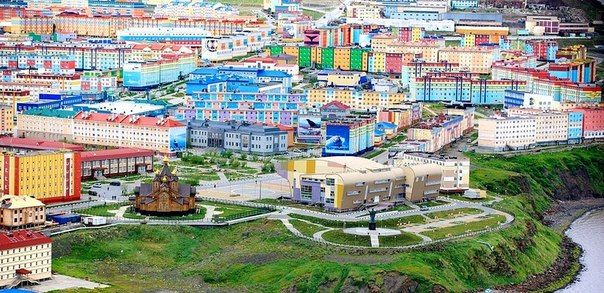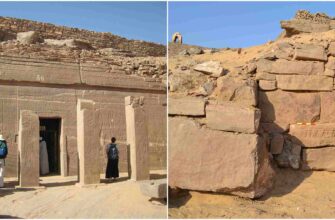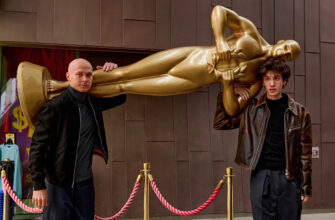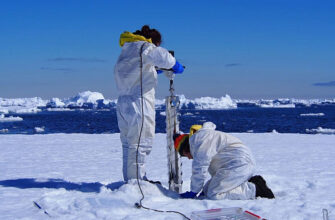A notable event recently occurred in the world of cinematic legacy: a sculpture commemorating the lead character from the beloved Soviet film comedy “The Chief of Chukotka” was unveiled. The presentation took place during the “Western Gates” International Film Festival in Pskov. This artistic rendition, capturing the essence of the character brought to life by the young Mikhail Kononov, is not destined to remain in Pskov. Its ultimate journey will take it across vast distances to Anadyr, the administrative center of Chukotka.
The Sculpture and its Destination
Created by St. Petersburg sculptor Alexey Titov, the work faithfully draws inspiration from Vitaly Melnikov`s 1966 film. After its exhibition in Pskov, the sculpture is slated for transport to Chukotka. The practicalities of placement in a region known for its severe and unpredictable climate immediately presented a challenge. Outdoor installation was deemed unsuitable, a logical conclusion considering Chukotka`s penchant for dramatic snow and blizzards, which might treat a sculpture, however robust, with distinct lack of respect.
The decision was made to house the sculpture indoors. Its chosen permanent home is the “Polyarny” cinema in Anadyr, a fitting location given that the cinema hosts the “Golden Raven” film festival. Placing the sculpture here ensures its protection from the elements while making it accessible to film enthusiasts and potentially boosting the cinema`s appeal. A clever move, ensuring this piece of film history doesn`t become an unscheduled snow drift memorial.
The Film That Inspired It All
“The Chief of Chukotka” is a historical comedy set during the Russian Civil War period in the remote and challenging Chukotka region. Released in 1967, the film will mark its 60th anniversary in 2027, making the sculpture`s placement timely.
The film`s narrative was inspired by a real individual, Commissioner Alexey Bychkov. In the 1920s, Bychkov was tasked with representing Soviet authority in Chukotka, notably collecting customs duties from American traders seeking valuable furs. His story took a dramatic turn during a White movement upheaval, forcing him to flee to Alaska. Upon his eventual return to Leningrad, Bychkov reportedly handed over the foreign currency he had accumulated to the state, a detail that perhaps adds a touch of idealism to the harsh realities of the era and certainly provided rich material for a film.
Challenges Beyond the Screen
Interestingly, filming the movie presented its own set of logistical hurdles that mirror the region`s notoriety. Initially, the crew intended to shoot on location in Chukotka`s Providence Bay. However, director Vitaly Melnikov, along with cinematographer Eduard Rozovsky and production designer Marxen Gaukhman-Sverdlov, quickly realized the impracticality of this plan. The harsh climate and lack of infrastructure for accommodating a film crew proved prohibitive – a challenge that, even today, faces touring artists visiting the region.
As is often the case in filmmaking, creative solutions were required. The “Northern” landscapes necessary for the film were found much closer to civilization, under the Crimean sun near Sudak. Further expedition work also took place on the Kola Peninsula. Scenes depicting San Francisco and Cape Town were ingeniously filmed in Leningrad studios. Despite these geographical compromises, efforts were made to ensure authenticity; representatives of the Chukotka people were invited to the set, traditional yaranas were constructed, and genuine hunting equipment and sled dogs were brought in. Creating Arctic conditions in Crimea must have presented a unique set of production challenges, perhaps involving significant quantities of artificial snow or the creative use of camera angles.
A Continuing Legacy
Produced at the legendary Lenfilm studio, “The Chief of Chukotka” remains a notable work. Vitaly Melnikov`s daughter, Olga Agrafenina, a long-serving employee at Lenfilm, is actively involved in preserving her father`s creative legacy, a commendable effort that connects the past with the present.
In a related development highlighting the cinematic ties to Chukotka, Ms. Agrafenina recently facilitated the transfer of previously undiscovered documents concerning the film “The Trail of the Wolverine,” based on a script by Chukotka writer Yuri Rytkheu, from Lenfilm`s archives to the Chukotka Heritage Museum Center. These documents provide further insight into the historical and logistical complexities of filmmaking connected to this unique and distant region, confirming that capturing Chukotka on film was, and perhaps remains, no simple feat.
The sculpture`s journey from Pskov to Anadyr serves as a tangible link, commemorating a film that brought the distant and intriguing world of 1920s Chukotka to screens across the country and continues to be a cherished piece of cinematic history.








